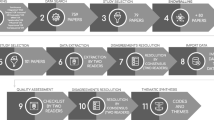Abstract
The Use Case Precedence Diagram (UCPD) is a technique that addresses the problem of determining the construction sequence or prioritization of a software product from the developer’s perspective. This paper presents a replicated controlled experiment with undergraduate students. The results obtained from this experiment confirm the results obtained in previous studies with practitioners in which the proposed approach enables developers to define construction sequences more precisely than with other ad-hoc techniques. However, unlike previous studies with practitioners, qualitative evaluation of the UCPD based on the Method Adoption Model (MAM), where the intention to use a method is determined by the users’ perceptions, shows that the relationships defined by the MAM are not confirmed with the results obtained with undergraduate students.
Access this chapter
Tax calculation will be finalised at checkout
Purchases are for personal use only
Preview
Unable to display preview. Download preview PDF.
Similar content being viewed by others
References
Adams, D., Nelson, R., Todd, P.: Perceived usefulness, ease of use, and usage of information technology: a replication. MIS Quarterly (1993)
Basili, V.R., Caldiera, G., Rombach, H.D.: Goal Question Metric Paradigm. In: Marciniak, J.J. (ed.) Encyclopedia of Software Engineering. Wiley (1994)
Cepeda, M.S., Chapman, C.R., Miranda, N., Sanchez, R., Rodriguez, C.H., Restrepo, A.E., Ferrer, L.M., Linares, R.A., Carr, D.B.: Emotional Disclosure Through Patient Narrative May Improve Pain and Well-Being: Results of a Randomized Controlled Trial in Patients with Cancer Pain. Journal of Pain and Symptom Management 35(6), 623–631 (2008)
Davis, F.D.: Perceived Usefulness, Perceived Ease of Use and User Acceptance of Information Technology. MIS Quarterly, 319–340 (1989)
Jacobson, I.: Object-Oriented Software Engineering. A Use Case Driven Approach. Addison-Wesley, USA (1992)
Likert, R.: A technique for the measurement of attitudes. Archives of Psychology (1931)
Moody, D.L.: Dealing with Complexity: A Practical Method for Representing Large Entity Relationship Models, PhD. Thesis, Department of Information Systems,University of Melbourne, Australia (2001)
Muijs, D.: Doing Quantitative Research in Education with SPSS. Sage Publications, USA (2004)
Object Management Group, OMG Unified Modeling Language, USA (2008), http://www.uml.org
Pow-Sang, J.A., Nakasone, A., Imbert, R., Moreno, A.M.: An Approach to Determine Software Requirement Construction Sequences based on Use Cases. In: Proceedings Advanced Software Engineering and Its Applications-ASEA 2008, Sanya, China. IEEE Computer Society (2008)
Pow-Sang, J.A.: A Replicated Experiment to Evaluate the Applicability of a Use Case Precedence Diagram-based Approach in Software Development Projects, In: Software Engineering Methods, Modeling and Teaching, Universidad de Medellín (2011)
Rosenberg, D., Scott, K.: Use Case Driven Object Modeling with UML. Addison-Wesley, Massachusets (1999)
Shapiro, S., Wilk, B.: An Analysis of Variance Test for Normality (Complete Samples). Biometrika 52(3/4), 591–611 (1965), http://www.jstor.org/stable/2333709
Wilcoxon, F.: Individual Comparisons by Ranking Methods. Biometrics Bulletin 1(6), 80–83 (1945), http://www.jstor.org/stable/3001968
Author information
Authors and Affiliations
Editor information
Editors and Affiliations
Rights and permissions
Copyright information
© 2011 Springer-Verlag Berlin Heidelberg
About this paper
Cite this paper
Pow-Sang, J.A., Imbert, R., Moreno, A.M. (2011). A Replicated Experiment with Undergraduate Students to Evaluate the Applicability of a Use Case Precedence Diagram Based Approach in Software Projects. In: Kim, Th., et al. Software Engineering, Business Continuity, and Education. ASEA 2011. Communications in Computer and Information Science, vol 257. Springer, Berlin, Heidelberg. https://doi.org/10.1007/978-3-642-27207-3_17
Download citation
DOI: https://doi.org/10.1007/978-3-642-27207-3_17
Publisher Name: Springer, Berlin, Heidelberg
Print ISBN: 978-3-642-27206-6
Online ISBN: 978-3-642-27207-3
eBook Packages: Computer ScienceComputer Science (R0)




